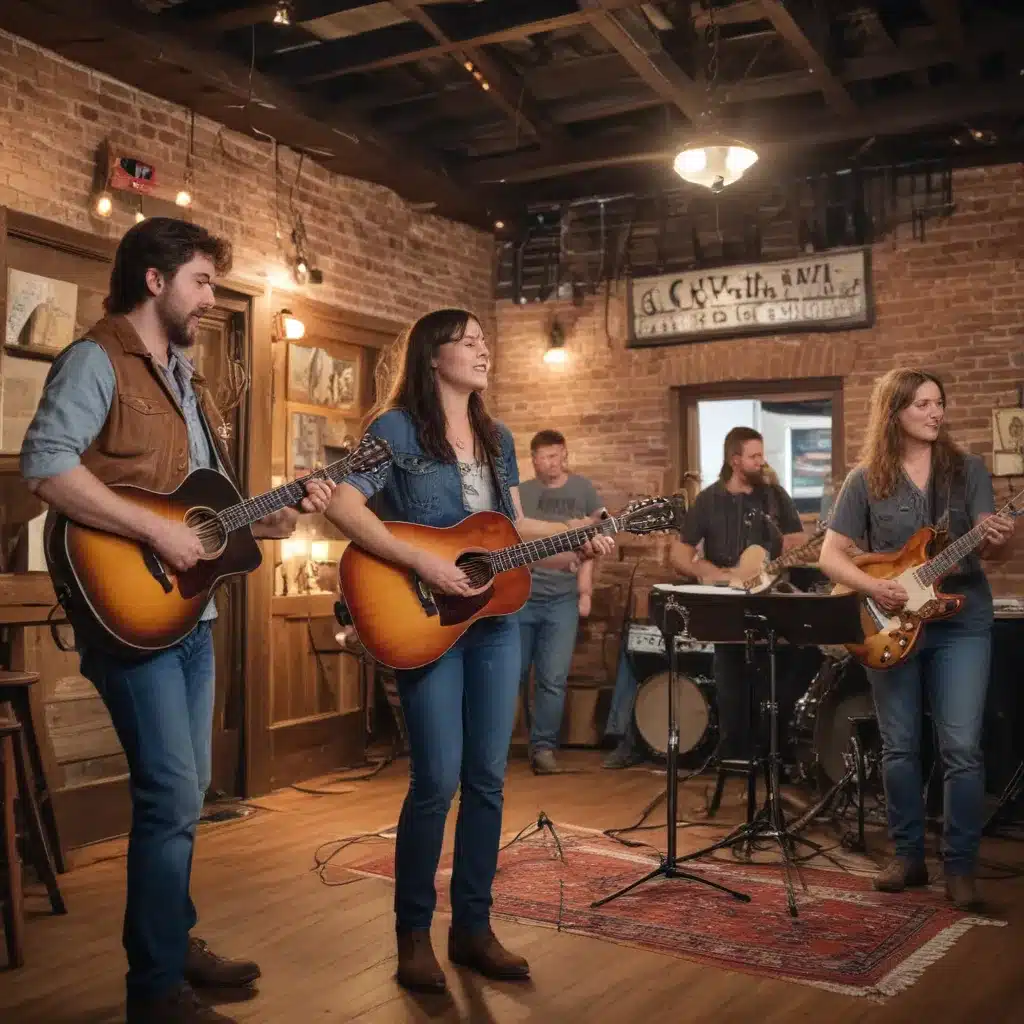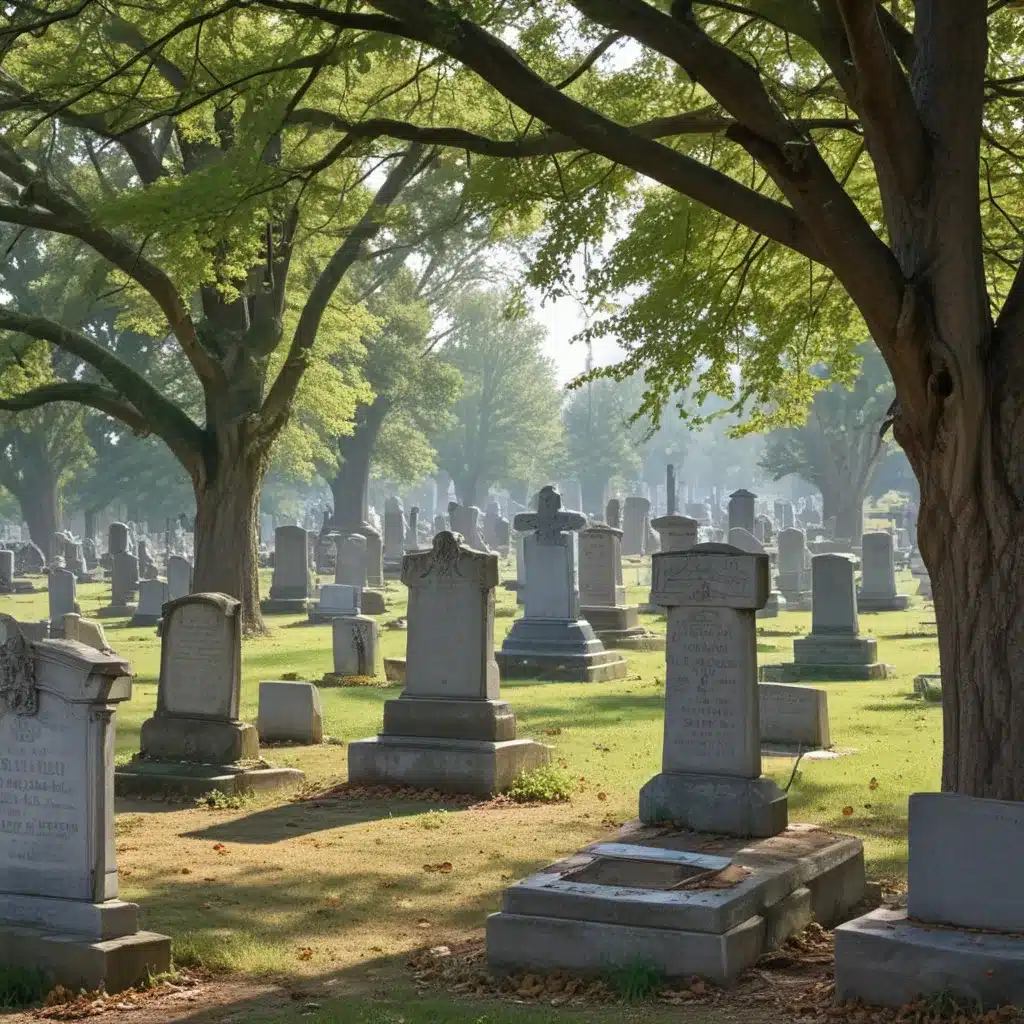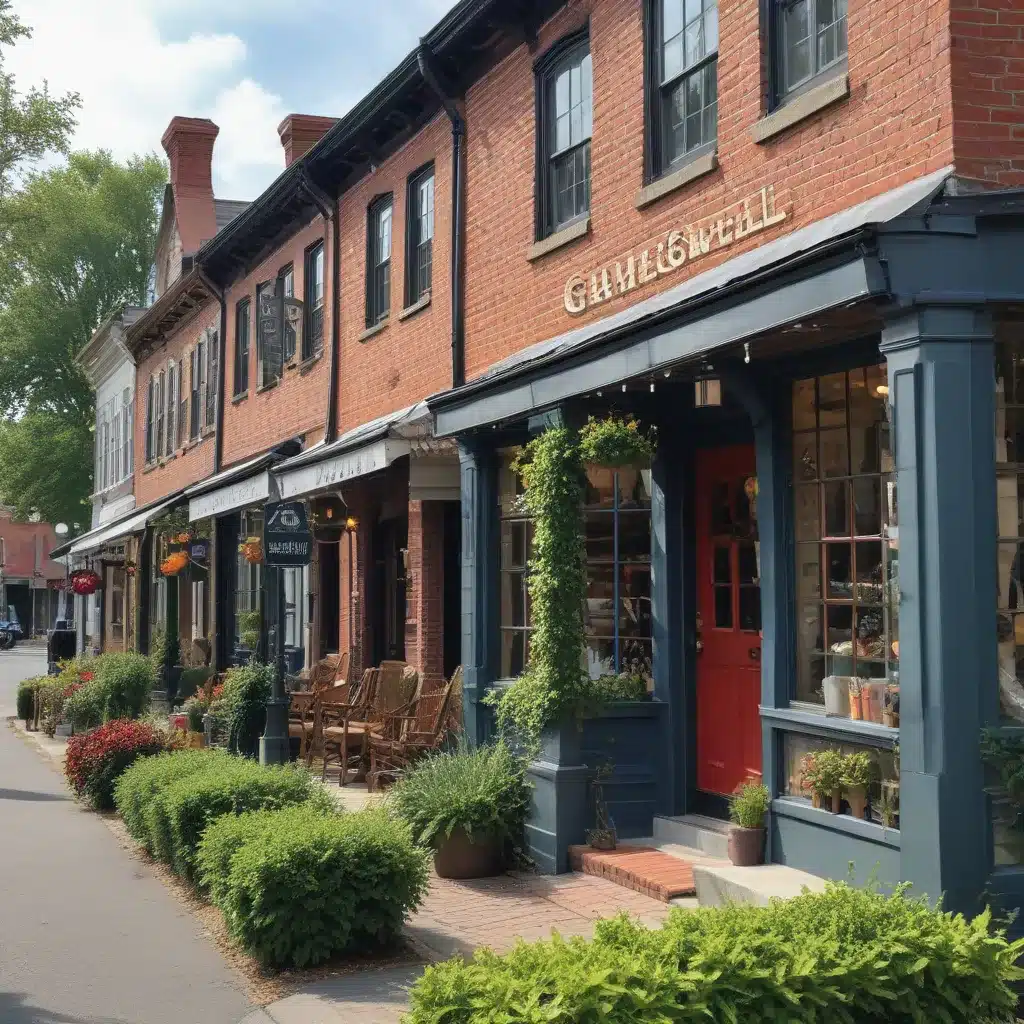Ah, the humble barns of Caldwell County – these architectural gems that dot our winding country roads are the unsung heroes of our region’s agricultural heritage. As I drive through the rolling hills and lush meadows, I can’t help but be captivated by the stories these weathered wooden structures have to tell.
A Glimpse into Caldwell’s Pastoral Past
Let me paint you a picture: Imagine a patchwork quilt of verdant pastures and neatly-tended fields, all framed by the distinctive silhouettes of these iconic barns. Some stand tall and proud, their once-vibrant hues faded to a weathered gray. Others lean slightly, as if bowing to the weight of the memories they’ve witnessed over the decades. It’s a scene that takes me back in time, to a bygone era when these barns were the lifeblood of our community.
You see, these structures weren’t just functional workspaces – they were the beating heart of Caldwell’s agricultural identity. Back in the day, they housed the tools and equipment that kept our family farms thriving. They sheltered the livestock that provided sustenance and income. And of course, they played a central role in the cultivation of our region’s most iconic crop: tobacco.
“These barns were the backbone of our local economy,” reminisces John Wilkins, a fifth-generation Caldwell farmer. “Everything revolved around that golden leaf – from the planting and curing to the sorting and selling. The barns were where the magic happened.”
Tobacco’s Enduring Legacy
Ah, yes – tobacco. The very mention of this crop evokes strong reactions, from nostalgic reverence to moral condemnation. But in Caldwell County, the relationship between our communities and this divisive plant runs deep. After all, it’s what put us on the map, attracting farmers and merchants from far and wide to our bustling tobacco markets.
“Tobacco was the lifeblood of Caldwell for generations,” explains local historian, Sarah Greenwood. “It wasn’t just a crop – it was a way of life. Entire families would pitch in, from planting the seedlings to hanging the cured leaves in the barns. It was backbreaking work, but there was a certain pride in it.”
And the barns, of course, were the centerpiece of this tobacco-centric existence. Picture the scene: Autumn winds rustling through the golden leaves, the pungent aroma of curing tobacco wafting through the air, and the rhythmic creaking of wooden beams as farmers meticulously tended to their precious harvest. It was a ritual that had been passed down for centuries, and the barns were the silent witnesses to it all.
Preserving the Past, Embracing the Future
But as times have changed, so too has the role of these barns in our community. Many have fallen into disrepair, their once-sturdy frames succumbing to the ravages of time and neglect. It’s a heartbreaking sight, a tangible reminder of the challenges facing our rural heritage.
“It’s tough to see these barns falling apart,” laments local preservationist, Emily Daniels. “They’re not just buildings – they’re living, breathing reminders of our history. We have to find a way to save them, to honor the stories they hold.”
Fortunately, there are glimmers of hope. Organizations like the Caldwell County Chamber of Commerce are working tirelessly to raise awareness and funds for barn restoration projects. They recognize the immense cultural and economic value these structures hold, not just for our agricultural community, but for the region as a whole.
“These barns are a draw for tourists and history buffs alike,” explains the Chamber’s executive director, Sarah Thompson. “By preserving them, we’re not just safeguarding our past – we’re investing in our future. Visitors can come and experience the authentic charm of Caldwell County, and local businesses can capitalize on the increased foot traffic.”
A Future Bright with Possibilities
And so, as I gaze out at the patchwork of barns dotting our countryside, I can’t help but feel a sense of hope. Sure, some may be a little worse for wear, but they’re still standing, still telling their stories. With a little care and attention, these icons of Caldwell’s agricultural heritage can be given new life, serving as beacons for a future that honors the past.
Perhaps one day, I’ll bring my grandchildren to visit these restored barns, regaling them with tales of tobacco harvests and community gatherings. I’ll watch their eyes light up with wonder, and I’ll know that the legacy of Caldwell’s barns lives on, ready to inspire the next generation of farmers, preservationists, and storytellers.
After all, these barns aren’t just structures – they’re living, breathing testaments to the hard work, resilience, and ingenuity that have long defined our community. And as long as we continue to champion their preservation, their stories will echo through the ages, reminding us all of the rich tapestry that is the Caldwell County way of life.
So, if you find yourself meandering through our rolling hills and valleys, be sure to take a moment to appreciate these architectural marvels. Who knows what secrets they hold, what tales they long to tell? The barns of Caldwell County are waiting, their weathered boards and sagging roofs whispering an invitation to uncover the past and shape the future.
Are you ready to answer the call?










